Posts Tagged: Megachile
Ever See a Leafcutter Bee Sunning Itself on a Milkweed Leaf?
Well, that's something you don't see every day: a leafcutter bee sunning itself on a milkweed leaf. The narrowleafed milkweed, Asclepias fascicularis, beckons monarch butterflies (the host plant), aphids, praying mantids and...
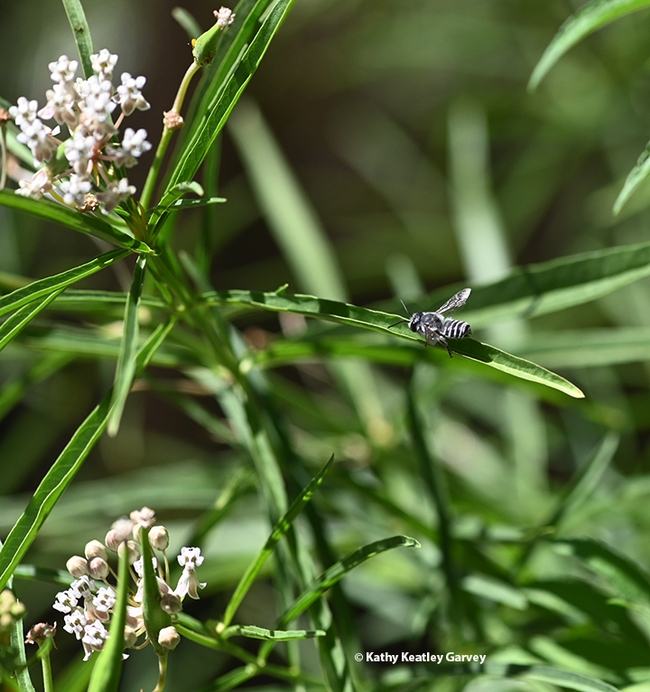
A leafcutter bee, Megachile spp., rests on a leaf of milkweed, Asclepias fascicularis, in a Vacaville, Calif. garden. Both are natives. (Photo by Kathy Keatley Garvey)
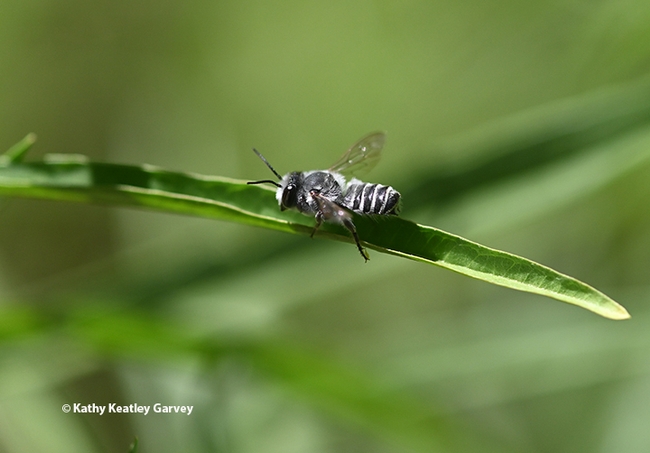
The leaf is long and the leafcutter bee is short. Leafcutter bees are smaller than honey bees. (Photo by Kathy Keatley Garvey)
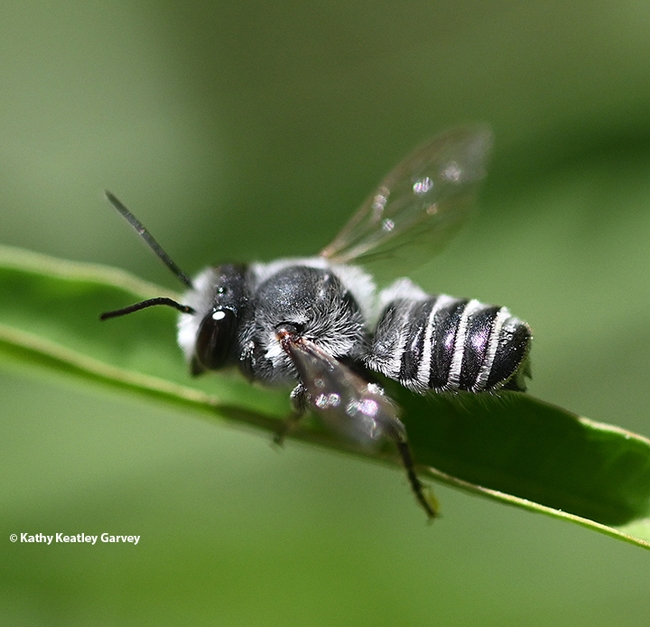
Close-up of the male leafcutter bee. (Photo by Kathy Keatley Garvey)
Day 5 of National Pollinator Week: The Leafcutter Bee
Day 5 of National Pollinator Week: Meet the leafcutter bee, family Megachilidae. It's a native pollinator, a solitary bee, and about the size of a honey bee. Its coloration--the black-and-white banded abdomen--makes it easily...
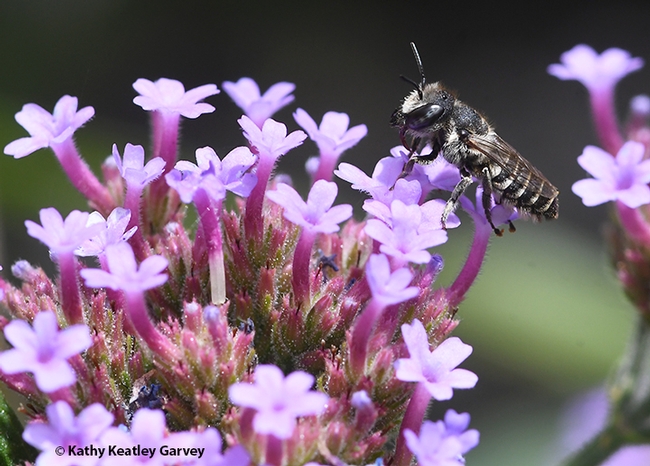
A leafcutter bee (family Megachilidae) foraging on Verbena in Vacaville, Calif. (Photo by Kathy Keatley Garvey)
In Search of the World's Biggest Bee: How It Came to 'Bee'
Imagine you're in an Indonesian rainforest and a humongous bee, with a wingspan of two and a half inches, flies over your head. The world's largest bee, known as Wallace's Giant Bee (Megachile pluto), considered extinct since 1981, lives. It's not...
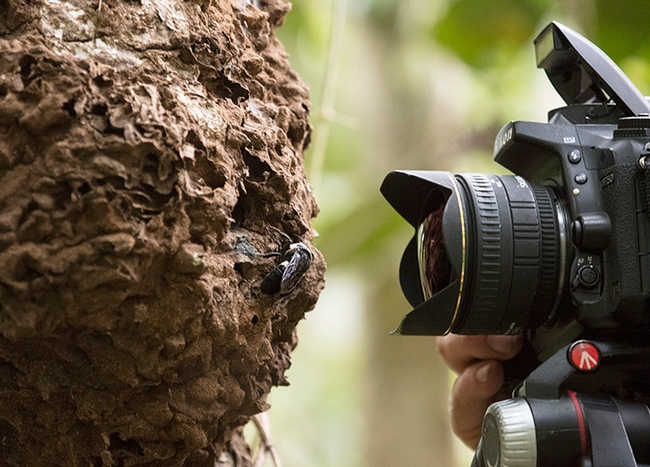
Natural history photographer Clay Bolt photographs Wallace’s Giant See in its nest. The bee nests in active termite mounds in the North Moluccas, Indonesia. (Copyright Simon Robson)
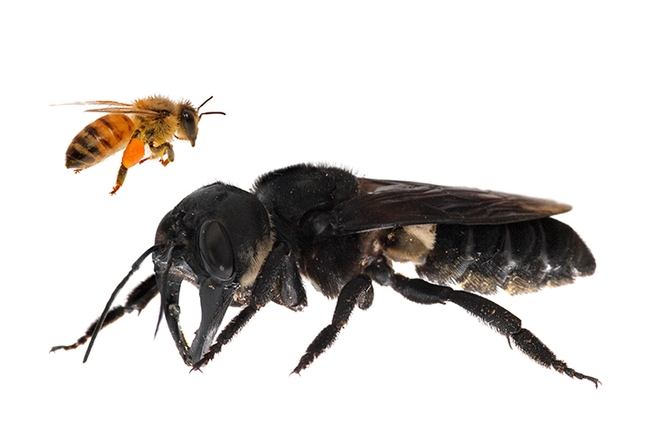
Wallace’s Giant Bee. Megachile pluto, the world’s largest bee, is approximately four times larger than a European honey bee. This is a composite. (Copyright Clay Bolt, www.claybolt.com)
Photographer Allan Jones Exudes Patience, Skill and Talent
Photographer Allan Jones of Davis exudes patience, skill and talent from the moment he enters the Häagen-Dazs Honey Bee Haven, a half-acre bee friendly garden operated by the University of California, Davis, Department of Entomology and Nematology...
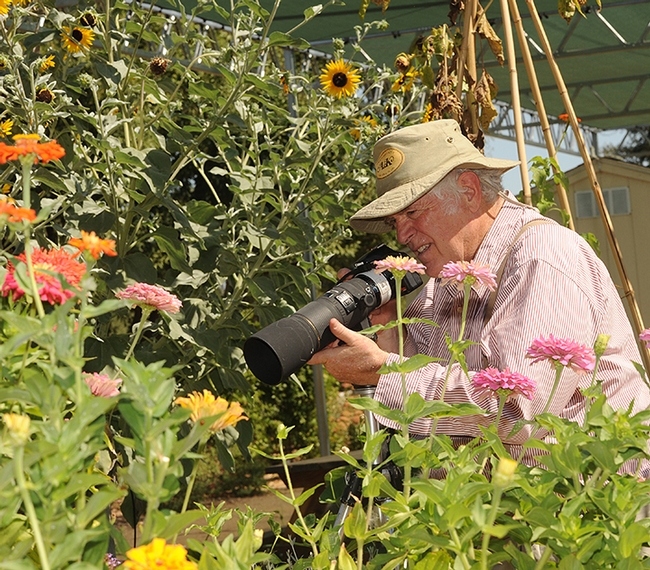
Photographer Allan Jones of Davis focuses his camera on insects in the Häagen-Dazs Honey Bee Haven. (Photo by Kathy Keatley Garvey)
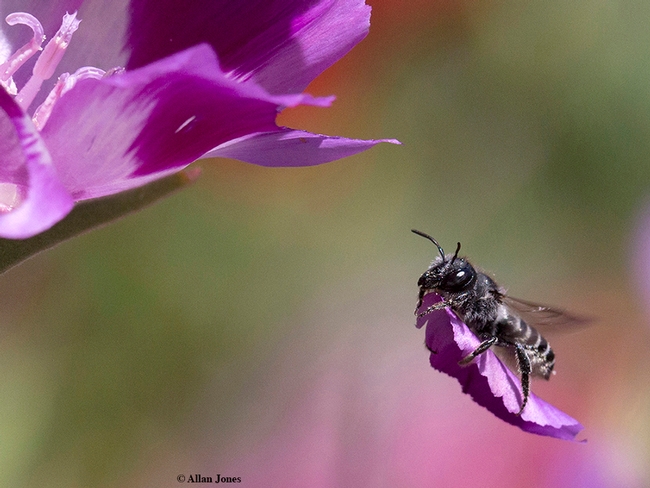
A female leafcutter bee, Megachile fidelis, carries a leaf, a Clarkia petal, back to her nest. (Copyrighted photo by Allan Jones, used with permission)
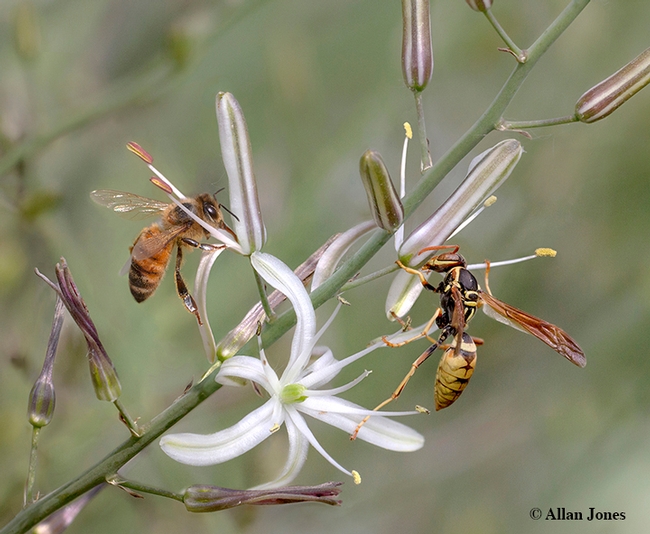
This "honey bee vs. wasp image is designed to help define and differentiate bees and wasps,” says photographer Allan Jones. (Copyrighted image by Allan Jones, used with permission.)
The Colors of Pollinator Week
As we near the end of celebrating National Pollinator Week, June 16-22, look around and see all the insects foraging on reddish-orange flowers. And occasionally, you might see a reddish-orange insect like the showy Gulf Fritillary butterfly. Orange, a...

Gulf Fritillary (Agraulis vanillae) spreads its wings on a purple coneflower (Echinacea purpurea). (Photo by Kathy Keatley Garvey)
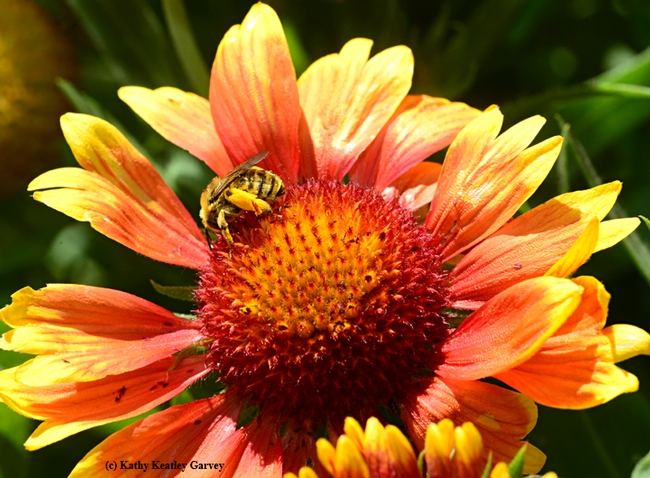
A sunflower bee (Melissodes agilis) forages on a blanket flower (Gallardia). (Photo by Kathy Keatley Garvey)

A green bottle fly rests on a Mexican sunflower (Tithonia rotundifolia). (Photo by Kathy Keatley Garvey)

Honey bee (Apis mellifera) on a blanket flower (Gallardia). (Photo by Kathy Keatley Garvey)

A leafcutting bee, Megachile fidelis, on a Mexican sunflower (Tithonia rotundifolia). (Photo by Kathy Keatley Garvey)

